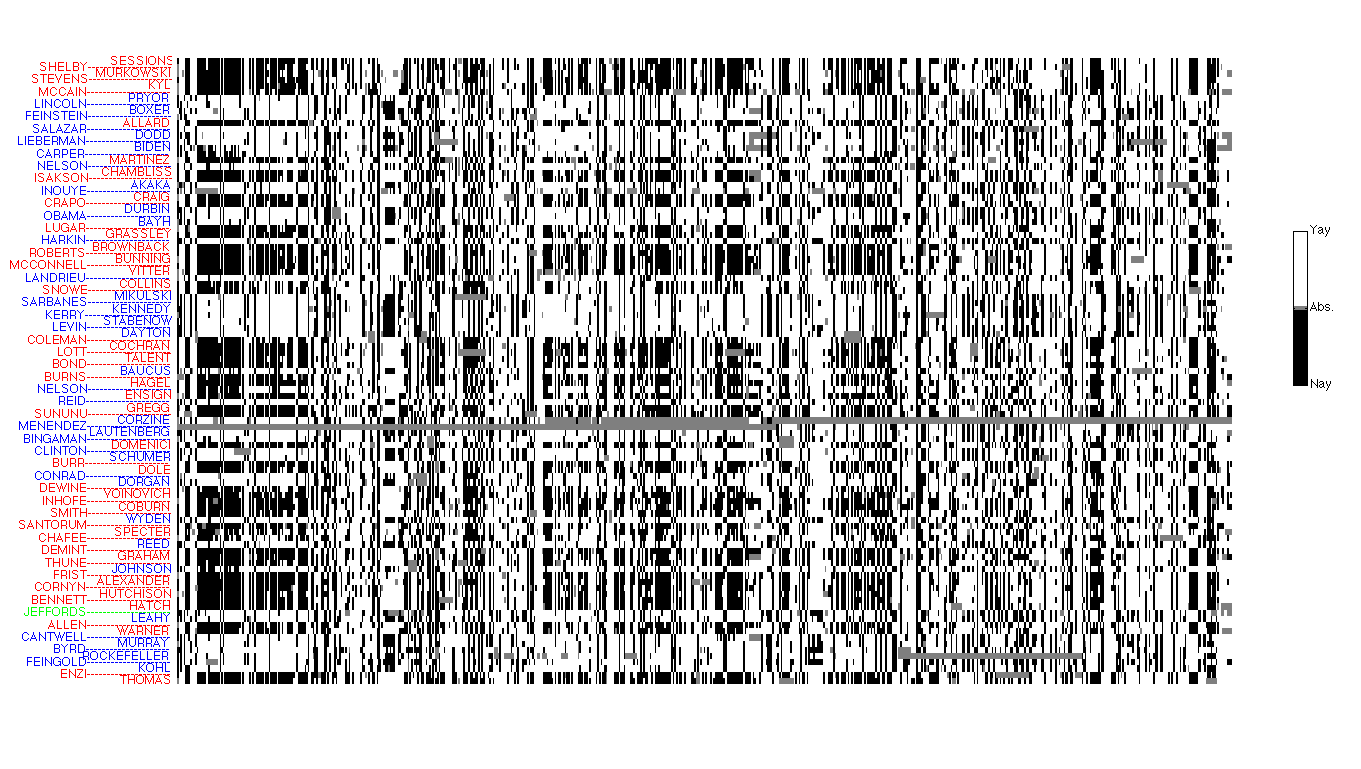Senate Voting Data Matrix
The data consists of the votes of ![]() Senators in the 2004-2006 US Senate (2004-2006), for a total of
Senators in the 2004-2006 US Senate (2004-2006), for a total of ![]() bills. “Yay” (“Yes”) votes are represented as
bills. “Yay” (“Yes”) votes are represented as ![]() ‘s, “Nay” (“No”) as
‘s, “Nay” (“No”) as ![]() ‘s, and the other votes are recorded as
‘s, and the other votes are recorded as ![]() . (A number of complexities are ignored here, such as the possibility of pairing the votes.)
. (A number of complexities are ignored here, such as the possibility of pairing the votes.)
This data can be represented here as a ![]() ‘‘voting’’ matrix
‘‘voting’’ matrix ![]() , with elements taken from
, with elements taken from ![]() . Each column of the voting matrix
. Each column of the voting matrix ![]() ,
, ![]() contains the votes of a single Senator for all the bills; each row contains the votes of all Senators on a particular bill.
contains the votes of a single Senator for all the bills; each row contains the votes of all Senators on a particular bill.

